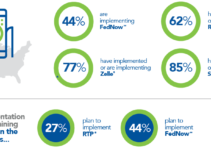The digital transformation is here in banking services. The pandemic crystallized just how far the technology has come, and for many users, there’s no going back. But making these services as approachable – or even better – than the traditional face-to-face experience is a key issue facing many financial institutions.
These types of technologies will only become more and more critical as banks face this seemingly paradoxical challenge: how can you make an increasingly self-service environment feel more personalized than a visit to the teller window?
Industry experts discussed the topic at a recent meeting of the FinTech Finance Virtual Arena.
“We start developing relationships with our customers through digital channels, and that can at first be very cold,” said João Dias, Chief Digital Officer at Portugal-based Novo Banco. “They tend to be very transactional, and focused on immediate needs. But over time, what we’re realizing is: since we know so much about our customers, if we put the right technology to work, we can give them a lot of insights on all sorts of levels in their lives. Insights around their financial needs and objectives.”
Ultimately, that kind of personalization is about taking full advantage of machine learning and AI tools to find effective ways to ingest the vast amounts of data the digital experience offers financial institutions about their customers, and ultimately, to turn that back around into useful advice, relevant insights, and a much more human experience through the digital channel.
“It gives the bank the opportunity to increase digital sales,” said Brian Stewart, EMEA Business Development Manager at international FinTech company Strands. “It gives positioning insights. For example, if through data enrichment, you can see your balance is running low, through these insights you can position an overdraft, which can go in the form of a pre-approved loan. That kind of insight is very important and offers a lot of value to the bank.”
And it goes past the traditional upselling and positioning for loans, though that’s always a core piece of any banking business – it’s a kind of open banking approach that can transform the banking services into the core of a platform, a real ecosystem that offers connections between a banks retail and commercial customers.
“We see in the rise of digital the opportunity to serve customers more broadly,” Dias said. “An opportunity for broadening our support well beyond pure financial services. If you asked me where I see enegagement going, that’s the vector where I see it’s going to be. How can we be relevant around other ecosystems? As a primary relationship bank, we’d love to be in a position to be a front brand to our customers. We can also be the silent partners and support our customers in a more backseat way. There’s a lot of ways we can be relevant to customers, but it’s about thinking about their whole experience and their financial needs.”
That kind of work will be crucial in a fully digitized banking future – it’s as simple as looking at who’s using these types of services, and making the right decisions to accelerate the process now before you’re left behind.
“Everyone’s clear that the demographics are changing,” Stewart said. “Banks really need partnership with FinTechs at the moment. These are the most innovative solutions coming to the market, and some of the big banks are really slow to move. I think partnering with FinTechs is key.”

